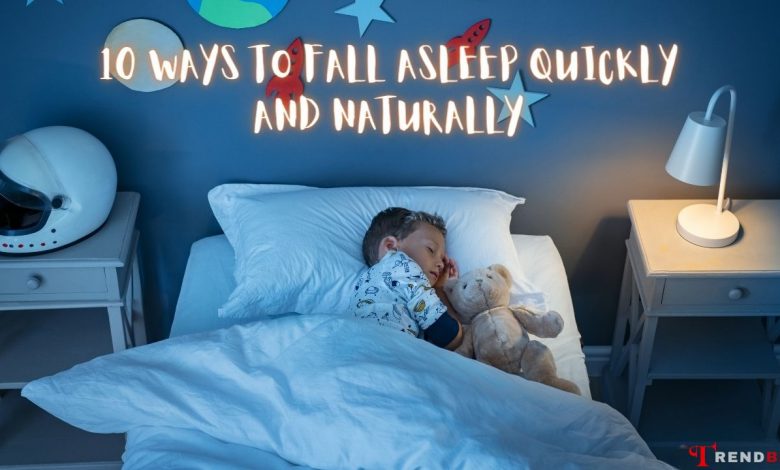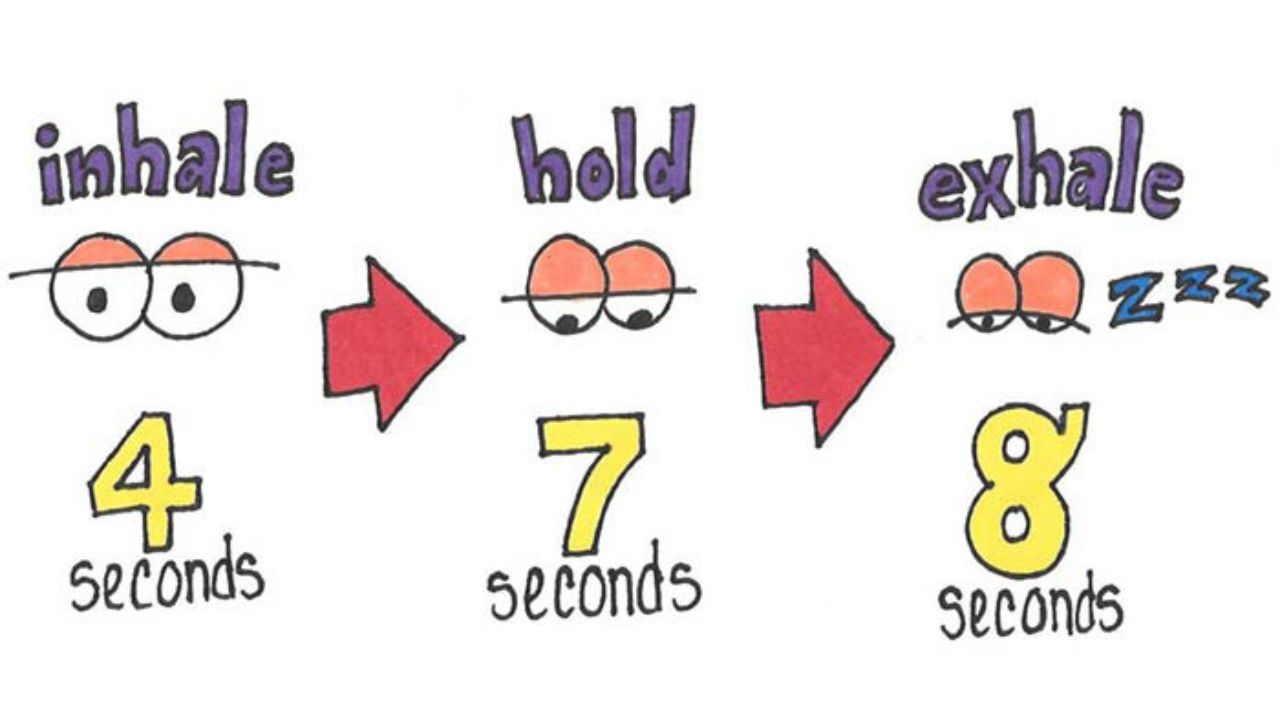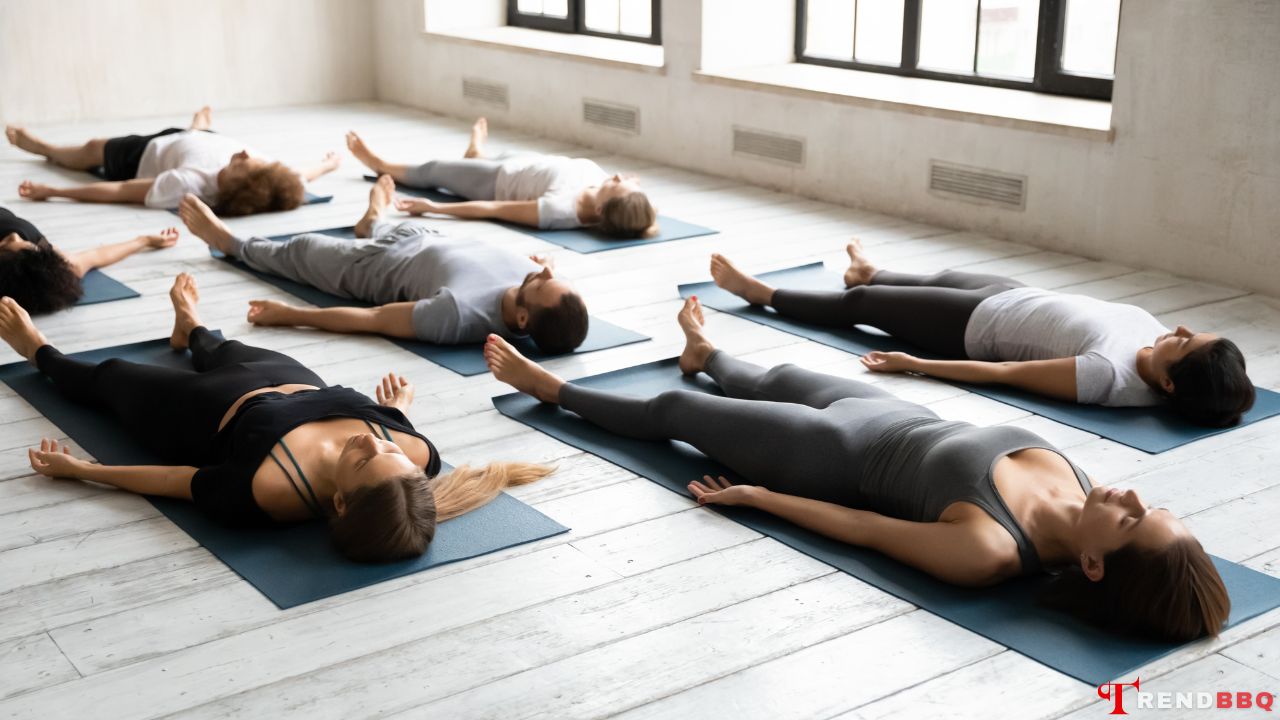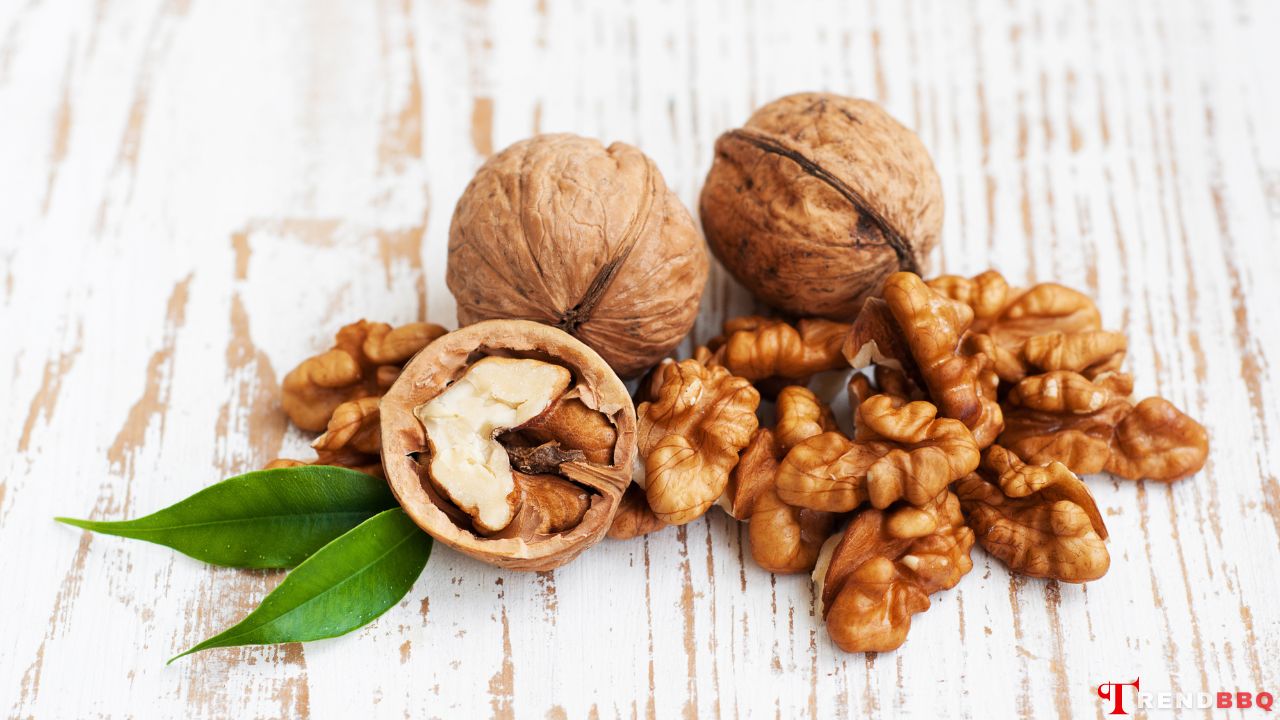
From the elderly to the young, anyone can experience difficulty sleeping. To maintain good health, an average person needs about 8 hours of sleep per day, preferably sleeping before 11 pm. But you toss and turn, your mind wandering, glancing at the clock, and panicking because it’s getting late, which only adds to the worry. So, how to fall asleep fast? Below, we will 10 ways to fall asleep.
Table of Contents,
1. Causes of Insomnia
- Psychological and Emotional Issues: Excessive stress and life pressures can profoundly impact one’s mental state, leading to difficulty falling asleep. Emotional distress, anxiety, or depression can also play a significant role in insomnia.
- Poor Sleep Habits: The scourge of poor sleep habits casts a shadow upon the realm of restful slumber. Within this quagmire lie the treacherous pitfalls of irregular nap times, excessive daytime napping, and the ill-fated entanglement with electronic devices before the hallowed bedtime hour. These deleterious practices clandestinely conspire to disrupt the body’s innate sleep-wake cycle, erecting an imposing barrier to the blissful embrace of sleep during the nocturnal hours.
- Heavy Late-Night Meals: In the twilight moments before succumbing to slumber, the ill-fated indulgence in a substantial meal stands as a malevolent adversary. A grand feast in proximity to bedtime unfurls a tapestry of discomfort, indigestion, heartburn, and pervasive unease, ensnaring the weary soul in a labyrinth of sleeplessness. The capacity to drift off into the realm of comfort becomes an elusive quest, thwarted by the consequences of this untimely culinary indulgence.
- Stimulant Consumption: The mischievous allure of stimulants, be it the invigorating brew of tea or coffee, the tantalizing embrace of tobacco, or the alluring allure of certain medications, unveils a clandestine assault on the sanctity of slumber. Like malevolent spirits, these stimulants emerge from the shadows to sow discord within the delicate tapestry of sleep patterns. They conspire to obstruct the gateway to serene rest, bestowing upon the weary soul the cruel affliction of difficulty in both the pursuit of somnolence and the sustenance of restful sleep..
- Lack of Physical Activity: The lamentable consequences of insufficient physical exertion manifest as weariness and debility, laying the foundation for a sinister predilection towards excessive daytime napping. This seductive allure of repose during the sunlit hours weaves a treacherous web, ensnaring the weary soul within its confines. Alas, this misguided pursuit of daytime slumber disrupts the delicate harmony of nighttime sleep, casting a dark shadow over the once tranquil realm of rest.
- Disruption of Circadian Rhythm: Traveling across time zones and experiencing jet lag can disturb the body’s internal biological clock, causing sleep disturbances until the circadian rhythm readjusts.
- Aging: As individuals age, they may experience more frequent awakenings during the night and encounter difficulties in falling asleep, potentially affecting the overall quality of their sleep.
- Medical Conditions: Amidst the labyrinth of slumber’s enigmatic realm, the presence of certain medical afflictions emerges as an ominous specter. In the intricate tapestry of sleep, heart conditions, acid reflux, and the haunting grip of asthma become malevolent forces that conspire to sow seeds of sleep disturbances and insomnia. Additionally, the ominous influence of certain medications casts a pall over the tranquil pursuit of rest, further exacerbating the elusive quest for peaceful slumber.
2. Signs of Insomnia
One of the noticeable signs of insomnia is experiencing restlessness at night, finding it difficult to fall asleep. Additionally, there are other symptoms such as:
- Frequent awakenings during the night or waking up too early.
- Feeling tired, fatigued, and drowsy during the day, but unable to sleep at night.
- Easily becoming irritable or having mood swings due to lack of sleep.
- Difficulty concentrating and experiencing memory lapses.
- Constantly worrying and obsessing over sleep-related issues.
3. How to fall asleep fast, good night sleep at home
The 10-second military sleep method
The 10-second sleep method originated from the U.S. military during World War II, aiming to help U.S. sailors and pilots fall asleep fast to gain more training time. Within the realm of tranquility and serenity, a method unfolds, weaving its spell of repose. The crux of this technique lies in the art of easing the mind and releasing the tension from every fiber of the body. As the celestial clock ticks, a mere ten seconds emerge, a precious span in which the mantra “Don’t think” finds its eternal refrain within the corridors of the mind. And like the gentle descent of a drowsy mist, the veils of slumber gently descend upon the weary soul, guiding it into the ethereal realms of restful sleep.
The 4-7-8 Breathing Technique – How to Fall Asleep Fast in 60 Seconds
The 4-7-8 breathing technique was developed by Dr. Andrew Weil, a sleep expert in the United States. This method will help you fall asleep fast, in less than a minute. The steps to perform this technique are as follows:
- Step 1: First, exhale completely through your mouth, making a strong, audible sound. Place the tip of your tongue against the ridge of tissue just behind your upper front teeth.
- Step 2: Inhale quietly through your mouth to a mental count of four.
- Step 3: Hold your breath and count to seven.
- Step 4: Exhale completely through your mouth, making a whoosh sound, and count to eight.
- Step 5: This completes one breath. Now, inhale again, and repeat the cycle for three more times.
This technique is believed to help you relax and fall asleep quickly by regulating your breath and promoting a sense of calmness.

Muscle Relaxation Technique
The muscle relaxation technique, also known as muscle stretching, serves to both reduce the risk of injuries during exercise and help you easily fall asleep quickly. You can perform this technique with the following steps:
- Step 1: First, lie down or sit on the bed, then take slow and gentle breaths about 5 times.
- Step 2: Next, point your toes towards yourself and hold the position, then relax your body. After that, push your toes away and continue to relax.
- Step 3: Then, stretch the lower part of your body by tightening the muscles in your calves, locking your knees, squeezing your thigh muscles, and tightening your buttocks. Alternate between holding the tension and relaxing your body between each movement.
- Step 4: For the upper part of your body, perform movements such as tightening or contracting your abdominal muscles, take deep breaths, tighten your chest, and raise your shoulders to the position near your ears. Alternate between performing these movements and relaxing your whole body.
- Step 5: Lastly, for the facial muscles, make movements like pursing your lips tightly, opening your mouth wide, closing your eyes tightly, and raising-lowering your eyebrows. Again, alternate between performing these movements and relaxing your body.

Practicing Yoga Exercises
Yoga, a sacred art transcending the boundaries of mere exercise, reveals its true essence as a profound journey towards harmony. Beyond the sculpting of the physical form, it beckons towards a realm of profound tranquility, where the seeker discovers the elusive embrace of inner peace. Within this sacred sanctuary, the whispers of restful slumber find resonance, gently guiding the weary soul towards the hallowed shores of a blissful night’s repose. Some yoga poses that can improve sleep include stretching, curling, child’s pose, cobra pose, sitting meditation, and boat pose.
Daily Exercise
Indulging in a ritual of daily exercise, gently embracing the path of moderate intensity, unveils the gateway to a realm of well-being. As the body dances to the rhythm of movement, a symphony of serotonin unfurls within the recesses of the mind, soothing the soul with the hallowed touch of tranquility. Amidst this dance of vitality, caution whispers its wisdom, advising against the crescendo of exertion as the sun bids adieu. When twilight descends, let the heart find solace in gentle strides like the dawn’s awakening, or the tender cadence of a tennis match, unveiling the secrets of revitalization in the early morn or the waning light of the afternoon.
Adhering to Biological Clock
Typically, an adult craves the embrace of slumber for approximately 7 to 9 hours within the span of a day. Thus, as the clock whispers its lullaby of rest, grant yourself a precious moment of serenity, enveloped in the arms of relaxation, a gentle interlude of 30 to 45 minutes before embracing the realm of dreams. Embrace the rhythm of consistency, like the steady beating of a heart, weaving the tapestry of a sleep-wake symphony, allowing the body to dance in harmony with the cadence of the sun and moon. By adorning the canvas of your days with this rhythmic ritual, you create a haven where the essence of slumber finds a home, inviting you to descend into the embrace of dreamland with ease.

Reading before Bedtime – How to fall asleep in 2 minutes
Reading books, magazines, or even comics before bedtime can help improve the depth and duration of our sleep, especially for children. However, you should avoid reading from electronic devices because the blue light emitted from these devices can suppress melatonin production, causing difficulty sleeping and fatigue the next morning.
Listening to Relaxing Music Before Bedtime
According to Professor Hui-Ling Lai from the University of Taiwan, music can support the treatment of heart rate and breathing, thereby helping you fall asleep fast. Additionally, the quality of sleep can also be improved, and it can be considered a therapy for treating chronic insomnia.
Choosing a Comfortable Mattress
Blankets, mattresses, bed sheets, pillows, and sleepwear are objective factors that affect the quality of your sleep. Therefore, you should choose a mattress and pillow with appropriate firmness and height, such as latex pillows, which help alleviate cervical spine degeneration.
Additionally, you should also pay attention to wearing comfortable sleepwear that is breathable, has good elasticity, and avoids wearing tight-fitting clothes that may cause discomfort, help fall asleep fast.

Avoid Using Electronic Devices Before Bedtime
As mentioned above, the blue light emitted from electronic devices can inhibit the production of melatonin, causing difficulty sleeping and fatigue the next morning. Therefore, you should avoid watching TV, playing electronics, or using social media on your phone, tablet, laptop, etc.
Additionally, you should also turn off Wi-Fi and disconnect these electronic devices at least 30 minutes before bedtime to avoid putting strain on your eyes and body, thus helping you fall asleep more easily.
4. Foods that help you sleep
Walnuts
The illustrious walnut, renowned for its culinary prowess, holds within its humble shell a treasury of tranquility. A bearer of tryptophan, the precious amino acid that extends its gentle hand to caress the restless nerves, guiding them towards a state of serenity, paving the way for blissful slumber to ensue.
Yet, the walnut’s allure does not cease there, for within its tender embrace lies the ethereal presence of melatonin, a celestial substance that orchestrates the symphony of sleep with grace and finesse. As the stars illuminate the night sky, the melodic dance of melatonin weaves a tapestry of tranquility, coaxing the weary soul into the realm of dreams.
Hence, from the walnut’s embrace, one may find solace in its bountiful offerings, savoring the tranquility it bestows upon the restless spirit, lulling it into the arms of peaceful repose.

Spinach
Spinach contains lactucarium, a compound with sedative properties that positively affect sleep. Adding spinach salad to your evening meal can help you sleep better!
Kiwi fruit
Kiwi is a fruit with low calories but rich in other beneficial nutrients. Among them, vitamin E, vitamin C, serotonin, and folate are all good for our sleep.
You can include kiwi in your daily diet as a dessert or in smoothies. It not only helps improve sleep but is also good for digestion, reduces inflammation, and lowers cholesterol.

Soy-based foods
Soybeans, tofu, and miso soup are foods rich in isoflavones, which have the ability to stimulate serotonin release. Serotonin is a neurotransmitter in the brain that regulates our sleep-wake cycle.
According to a study published in the Journal of Nutrition in 2015, adults who consume two or more servings of soybeans per day tend to have better sleep in terms of both duration and quality.
Foods high in fiber
Eating plenty of fiber can help you sleep better because fiber is related to the slow-wave sleep stage, which aids in body recovery during sleep.
Fiber also helps regulate blood sugar levels, improve melatonin levels in the body, and promote better sleep. You can add fiber to your diet from grains, legumes, and green vegetables.
Fatty fish with omega-3 fatty acids
Fish such as tuna, salmon, and mackerel are rich in omega-3 fatty acids, vitamin D, DHA, and EPA.
Many studies have shown that combining vitamin D with omega-3 fatty acids can improve our sleep and stimulate serotonin production, a beneficial chemical for sleep.

Yogurt and fresh milk
Adequate calcium absorption can contribute to better sleep. Dairy products like milk, yogurt, buttermilk, and fresh milk can help you meet your calcium needs.
You can drink a warm glass of milk before bedtime to sleep better!
Whole grains
Magnesium is another mineral that is often deficient and can lead to reduced sleep quality. Foods rich in magnesium, such as oats, wheat, and whole grains, should be included in your diet to help you sleep better every night.
5. Correct sleeping positions
Sleeping on your back, with a straight back
Sleeping on your back, with a straight back not only protects the stability of your spine but also reduces the risk of hip and knee pain.
In this position, your muscles, joints, and spine are most relaxed. Blood circulation is also facilitated, which helps you sleep well without affecting your height.
Moreover, sleeping on your back is good for the stomach as it will be positioned lower than the esophagus, preventing acid reflux discomfort. When your face is facing upward, it also reduces the formation of sleep wrinkles.
However, this position is not suitable for people who snore or have breathing difficulties. In such cases, you can add a pillow under both knees to create a curvature on the sides or switch to a side sleeping position.

Sleeping on your side
People who experience breathing difficulties, snoring, heartburn, or acid reflux may find sleeping on their side more suitable. In this position, the body leans to one side, with the shoulder bearing some pressure, and the body slightly curved.
However, you should avoid lying on one side for too long, as prolonged leaning on the left side can put pressure on the organs and compress the heart. On the other hand, sleeping on the right side for an extended period can put pressure on the lungs.
Sleeping in the fetal position
This position is similar to sleeping on the side but involves curling up the body and placing the hands near the head, resembling the shape of a fetus in the womb. This position is also good for pregnant women and people who snore.
However, staying in this position for too long can lead to back and knee pain and may contribute to facial sagging and wrinkles.

Stomach sleeping
Sleeping on the stomach is believed to enhance the effectiveness of the buttocks, as the buttocks are mainly composed of fatty tissues that can expand more freely in this position.
However, this position is not suitable for the breasts as they may be compressed, leading to sagging. Many experts do not recommend it either because prolonged stomach sleeping can cause backaches and fatigue.
Spooning position
This position is suitable for couples when they both lean to one side and cuddle each other. Physical contact and affectionate gestures will bring a sense of security and facilitate falling asleep.
Moreover, many experts believe that spooning releases oxytocin, which helps relieve stress and promotes better sleep.
Above are how to fall asleep fast, guaranteed to help you get a deep sleep in just a few minutes. Hopefully with this article of Trendbbq.com, you will be able to sleep better, thereby helping your body to be healthy as well as your spirit to become more refreshed!




Thank you for your sharing. I am worried that I lack creative ideas. It is your article that makes me full of hope. Thank you. But, I have a question, can you help me?